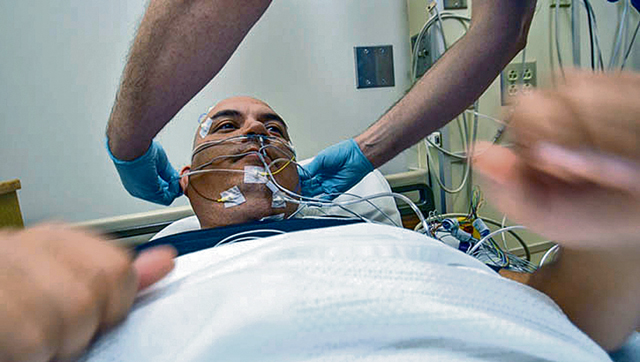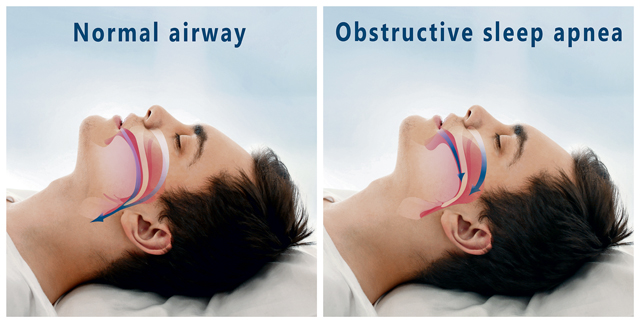Do you sometimes wake up feeling tired, headachy, or have a sore or dry mouth?
These could be symptoms of obstructive sleep apnea, also known as OSA. It’s one of several common sleep disorders affecting service members.
Getting proper sleep means sleeping at least seven hours a night and sleeping continuously through the night. Good sleep remains vital to service members’ physical and psychological strength and resilience.

“OSA is the most common sleep-related breathing disorder,” said Army Lt. Col. (Dr.) Jennifer Creamer, a sleep specialist at Fort Leavenworth, Kansas. Yet it “remains undiagnosed in most affected men and women.”
“It’s caused by the repetitive collapse of your upper airway during sleep,” she said.
This occurs when your throat muscles relax, blocking your airway while you sleep. That makes it harder to get enough air, which decreases the oxygen levels in your blood, explained Creamer.
Your brain senses your breathing problem and wakes you up briefly throughout the night so you can reopen your airway. Symptoms include loud snoring, choking or gasping. The repeated sleep interruptions can make you feel tired, irritable, or unfocused throughout the day.
“Sleep fragmentation contributes to lighter and less restorative sleep,” said Creamer. It can affect your mood, your performance and your quality of life.
Who’s at risk for OSA?
OSA can affect anyone at any age. However, it affects younger men at a higher rate than younger women, Creamer said. Among older people, that gender gap closes. “Sleep apnea increases in women at the time of menopause,” she said.
The symptoms for women with OSA are distinct. Women are more likely to have insomnia and less likely to snore or show noticeable pauses in breathing, she explained.

Still, several factors can influence a sleep apnea diagnosis, including excessive weight. Other risk factors include advancing age, having a recessed jaw or enlarged tonsils, Creamer added.
Sleep apnea can also be linked with other health problems, such as heart, kidney, and pulmonary diseases; high blood pressure; and stroke, she said. It can also contribute to depression or anxiety.
How is it diagnosed?
Health care providers can evaluate people at risk for OSA and order a sleep study to confirm evidence of the disorder. Some sleep studies require a patient to stay overnight in a sleep lab. Home sleep tests are also available.
During an overnight lab study, a technician attaches electrodes to your scalp to record your brain waves. They also monitor your breathing, the oxygen levels in your blood and your heart rate as well as your eye and leg movements during the night.
The home tests use breathing monitors with sensors that track your breathing and oxygen levels. One type has a probe that goes over your finger and the other has probes over your finger, under your nose, and on chest belts.
How is it treated?
Depending on each patient, doctors can recommend numerous treatments for mild OSA. Losing weight can be helpful. Another tactic is to change your sleeping position, such as sleeping on your side if your OSA occurs when you sleep on your back, continued Creamer.
Reductions in smoking or alcohol consumption can also reduce OSA, according to the National Institutes of HealthNIH’s National Heart, Lung and Blood Institute website on sleep apnea.
Another option is to wear a device over your teeth while you sleep. It fits over your teeth like a retainer to keep your jaw in a forward position and keep your airway open.
For moderate to severe OSA, treatment options include upper airway surgery or Continuous Positive Airway Pressure, known as CPAP, therapy. CPAP machines use a facemask and mild air pressure to keep the airways open.
For more information, or if you’re concerned that you may have OSA, see your primary care provider for further evaluation. If you meet criteria, your provider can refer you for a sleep study.
Some sleep studies are covered by TRICARE on https://www.tricare.mil/CoveredServices/IsItCovered/SleepStudies.


